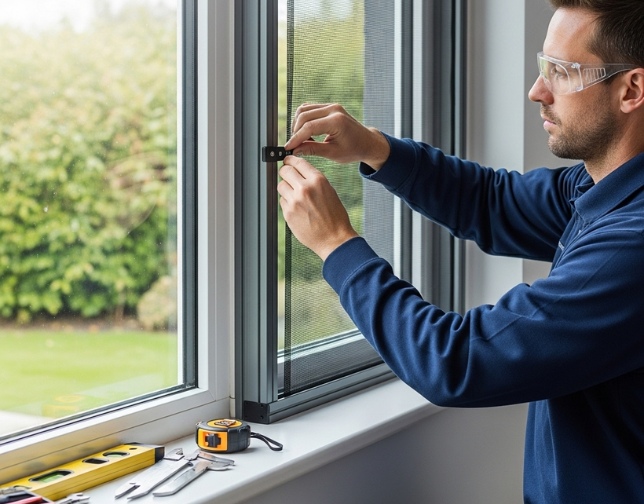DIY Tips on How to Fasten Patio Furniture Covers in Windy Weathers
- malik tanveer
- Jan 1
- 4 min read
The patio furniture cover protects your furniture from rain, sun, dust, and so much more; however, winds can be difficult. When wind blows, strong gusts often cause covers to flap, become loose, and even blow off, leaving the furniture exposed to the elements. With effective DIY tips, it is possible to ensure that covers stay firmly in place even when winds are blowing.
This guide gives you practical tips and techniques to secure patio furniture covers so you save time and effort while maintaining your furniture.
Why Secure Patio Furniture Covers in Windy Conditions
Leaving patio furniture covers unsecured is associated with several problems:
Furniture Damage: It is prone to rain, sun, and dust where it can weaken and cause fading, rusting, or cracking.
Cover Wear and Tear: Flapping covers will tear or wear out very fast because of constant movement.
Loss of Covers: The unsecured covers can blow away, and you will be forced to replace the covers as they will leave your furniture exposed.
Taking your time to secure your covers ensures they remain functional and effective for a longer time.
Tools and Materials for Securing Patio Furniture Covers
Here is a list of tools and material that can be used in securing your outdoor furniture covers dubai
Bungee cords
Heavy-duty Velcro straps
Elastic cords or drawstrings
Sandbags or weighted anchors
Clips or clamps
Furniture tie-down straps
PVC pipes or rods for added weight
Most of these are pretty inexpensive, available everywhere, and very easy to use in DIY solutions.
Tips to Secure Patio Furniture Covers
Built-In Features on Covers
Many patio furniture covers come with built-in features to help secure them:
Elastic Hems: Ensure the elastic hem is tucked tightly around the base of the furniture.
Drawstrings: Pull the drawstrings tight and tie them securely to prevent wind from lifting the cover.
Velcro Straps: Attach these straps around the legs of the furniture for added security.
Bungee Cords for Extra Security
Bungee cords are a versatile and effective way to secure covers.
Wrap bungee cords around the furniture and cover, ensuring a snug fit.
Tie the cords to the furniture's legs or other fixed points to prevent the cover from slipping.
Use Sandbags or Weighted Anchors
Adding weight to your covers can keep them in place during windy conditions.
Position small sandbags or weighted anchors on the furniture's corners or edges.
Or use water-filled weights for patio furniture covers.
DIY Weights with Household Items
If you do not have sandbags, here are some DIY weights:
Water Bottles: Fill up those reusable bottles with water and hang them from the edges of the cover.
Rocks or Bricks: Set heavy rocks or bricks on furniture under the cover to weigh it down.
Clips or Clamps for Taut Fit
Clips or clamps are a neat and effective way to secure covers in place:
Attach clamps to the cover’s edges and furniture frame.
Use tarp clips for a stronger grip on slippery materials.
Tie-Down Straps
Furniture tie-down straps are designed to secure covers tightly.
Wrap the straps around the furniture and fasten them securely.
Choose straps with adjustable buckles for a customized fit.
PVC Pipes or Rods for Weight Distribution
Incorporating PVC pipes or rods can add weight and stability to your covers.
Sew or tape pockets to the edges of the cover and put PVC pipes in.
The extra weight will prevent the cover from flapping or lifting with the wind.
DIY Windproof Covers
If your covers do not have any sort of securing mechanism, here are some DIY improvements:
Sew more straps or Velcro patches on the covers for better fastening.
Insert grommets on the edges of the covers and tie them down with ropes.
Keep Lightweight Items Inside
Take cushions and other lightweight items inside during windy conditions. This minimizes the chances of the cover lifting due to trapped air.
Fit Tight
A loose cover is more likely to flap and lift in the wind. Select covers that fit your furniture snugly or use additional straps to tighten the fit.
Maintenance Tips for Long-Term Security
This is not a one-time job, but rather regular checks ensure that they are effective:
Check your covers often
Check for any tears, broken straps, or frayed elastic hems.
Replace damaged covers or repair them immediately.
Clean your covers often
Remove dirt, debris, and moisture that might cause wear and tear.
Wash with mild soap and water, and allow them to dry completely before use.
Make adjustments when necessary
Retighten straps, cords, or drawstrings after particularly windy days.
Seasonal adjustments are made according to changing weather conditions.
Storage of Covers in Extreme Weather
During extreme windstorms or hurricanes, the covers are removed and stored indoors.
This avoids unnecessary wear and tear.
Conclusion
Securing patio furniture covers in windy conditions is important to protect your furniture and the longevity of the covers. You can keep your covers firmly in place using simple tools such as bungee cords, sandbags, and tie-down straps or by implementing DIY modifications. Regular maintenance, proper fit, and thoughtful storage practices further enhance their effectiveness. With these DIY tips, you can enjoy peace of mind knowing your patio furniture is safe, no matter the weather.


Comments